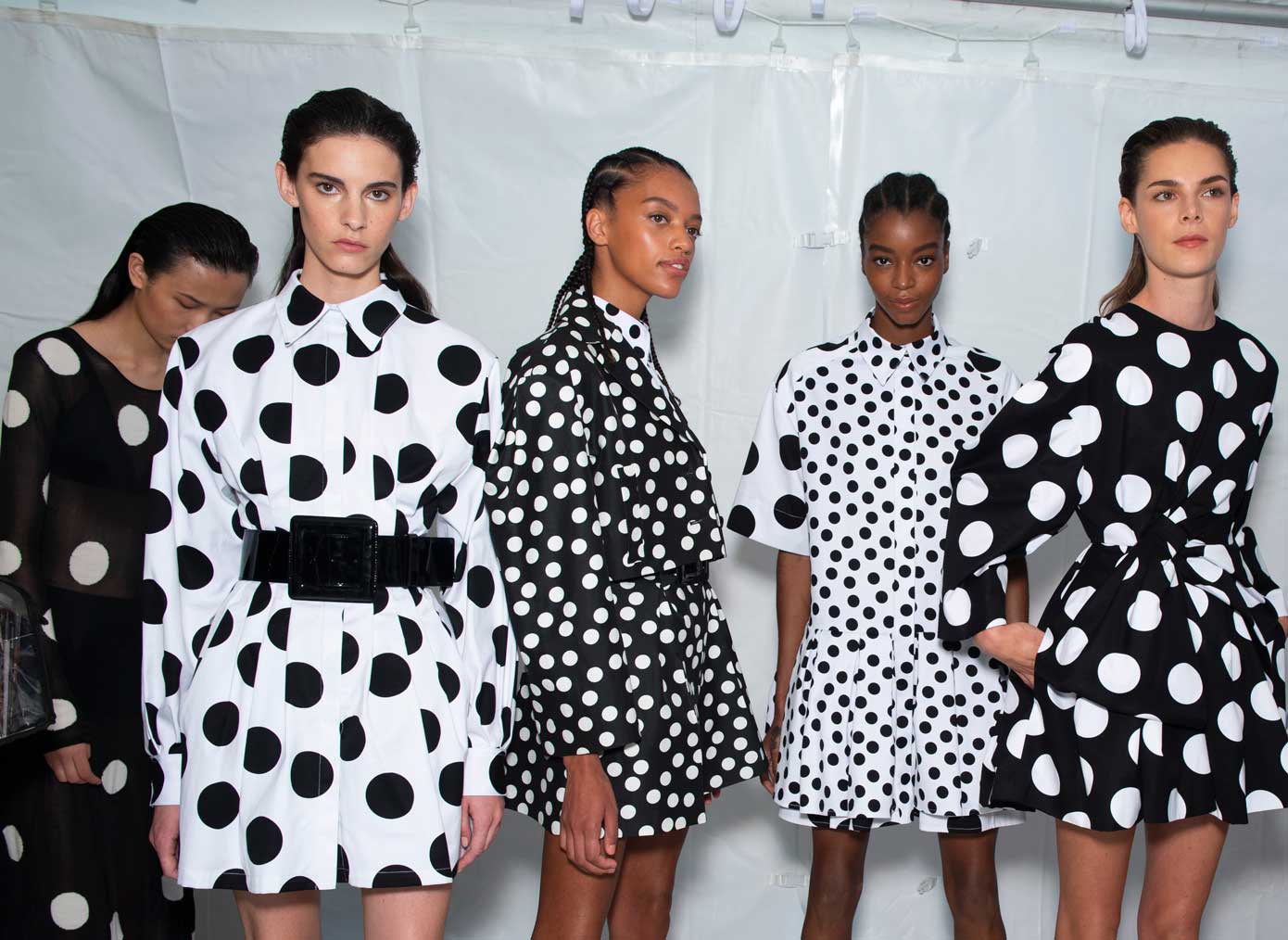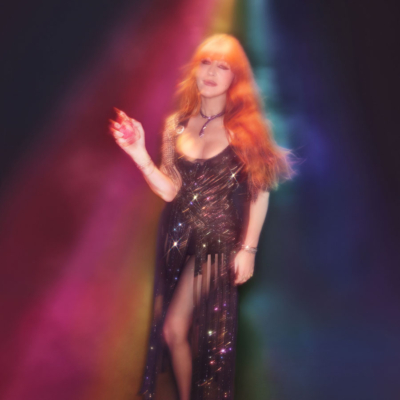Keep these fashion facts up your (polka dot) sleeve for your next Zoom trivia quiz …
How’s your clobber-knowledge? Trends in self-presentation have played major roles in, war, science, art, politics and law throughout world history. Fashion is so much more than what the planets’ inhabitants feel like wearing – fashion is central to the creation of culture!
Certain sartorial conventions that we might consider classic are (as I have discovered with Reddit research) actually quite new. Did you know the T-shirt only became a style staple when Marlon Brando wore one in a film?
Also surprising is the realisation that many of fashion’s recent revolutions were, in fact, renaissances. For instance, using industrial materials in fashion manufacturing didn’t start with the sustainable-style sensation of the 2020s, but actually began in Mussolini’s Italy. The more you know…
Take a look at some vestiary trivia:

1. Polka dots are named after the dance – and simply because, the dance was super popular back then!
Naming patterns and prints must be great craic for those in charge of it. Houndstooth, paisley, and gingham are some of my favourite words of all time! But who decides these things?
Polka-dot print is the print of innocence, of joy and cutesy-kitsch – but commands serious cool factor where it’s styled correctly. This bonny pattern has been around for yonks and I have always wondered who decided to name it. Was it Mrs. Penny Polka who cannily thought to herself one day, “Eureka! Let’s design … dots! Big, round dots!”
As it happens, this pattern is named after a Bohemian dance, the polka. ‘Tis a lively jig, apparently, that was introduced in Parisian ballrooms in 1843. My research tells me it involves “three quick steps and a hop” – and that the big-dot print which for it was named, has nothing to do with it. According to the internet, the pattern and the dance are unrelated, but were both popular at the same time. Go figure.
2. Harper’s Bazaar ran an advertisement not that long ago – in 1910 – which promoted shaven underarms. Before this, the idea was unheard of. The trend persists today, and supports a huge part of the hair-removal side of the beauty industry.
Long before Venus by Bananarama wormed its way into womens’ brains as part of the Gillette marketing campaign, convincing us by reason of a catchy 1980s jingle to eliminate all signs of nature from beneath our arms, nudey smooth ‘pits was a big thing. Even though the craze is arguably on the way out now – a recent study claims that nearly one in four women under the age of 25 have stopped the shave – it perseveres to a considerable extent around the world.
So, I was intrigued to discover that the bare-pits trend is pretty new! Although if we are to believe stereotypes, the French never got the memo – but liberté to them.

3. In Western dress codes, a black-tie event is technically only ‘semi-formal’, as fully formal dress is ‘white-tie’ – the dress code that requires male guests to wear coat-tails.
This fact here really appeals to my world view, which is that everyone’s current impression of ‘formal’ is in fact ‘underdressed’. I sit here awaiting a resurgence in formalwear to all occasions post-pandemic – evening gowns to everyday gaffs, or nothing at all, I say.
Anyway, it turns out that our perception of the fanciest gear, black-tie, is actually only second to white-tie, which is far fancier. That means even your debs look – as glamorous as you definitely thought it was – is sub-par by the official standards. Time for everybody to seriously up their game! Weekly-White-Tie-Wingdings 2022, anyone?

4. T-Shirts have existed since the late 1800s, and the plain white T-shirt became popularised as a wear-alone garment by Marlon Brando.
In 1951, icon and hunk Marlon Brando starred in a little film called A Streetcar Named Desire, and turned Hollywood on its head. Brando didn’t win the Academy Award for Best Actor, but he did win the attention of ready-to-wear fashion visionaries. Since this movie, the plain white tee began to appear in everyone’s wardrobe – be them young, old, big, slim, working, student, retired, girl, boy, or in-between. Every spring/summer ready-to-wear designer line includes a twist on the original tee.
Tees originally began as not-so-sexy ‘union suits’ – button-down onesie-type garments worn by America’s workers below their day-clothes in the 1800s. While the suits proved effective at keeping out the cold in chilly weather, they proved cumbersome in the summer months – so early on in is evolution, the union suit was cut in half, creating the T-shirt. So, in the 50s, Brando had made what was previously an underwear item into a provocative vestiary statement.
Back then, the plain white tee represented simplicity, honesty, and rebellion, so was perfect for Brando’s rough-and-tough masculine character in Streetcar. Today, it has morphed into a versatile medium for all statements. Everyone’s got one. Think of how many you own… Mad!
5. Flour distributors during the Great Depression used to add patterns and bright colours to their flour sacks, aware that many people at that time were using the flour sack material to make clothing.
Stories about the Great Depression seem alarmingly cohesive to our current times. Our school revision Of Mice and Men might ring in one’s ears with 2021’s re-examination of the American Dream, social inequality and of course – astronomical unemployment rates. But the Great Depression remains American history’s worst ever recession, and tales of how the American people, in local businesses, communities and industries, responded, are incredible to note.
This fact is one of these tales. Apparently, workers in American mills that stitched the flour sacks had begun to notice local women and children wearing the plain brown bags. Some sacks would simply be cut open at one end, for a tunic, and others would be repurposed into shorts, trousers or dresses. This practice is said to have started with farm women in South Louisiana, who would wash off the flour company logo and repurpose the sacks for clothing and houseware. Somewhere in one of these factory towns, someone had an idea.
By 1925, one company, Gingham Girl Flour, packaged its goods in dress-quality fabrics, and used its multi-purpose sacks as a selling point. Printed sacks were widely reused and companies continued to sell their products (seed, flour, sugar and oats) through World War II and into the early 1960s.

6. No-one wore a white dress to their wedding until Queen Victoria wore one to wed Prince Albert.
Royal weddings have always set the wedding industry alight, bridal fashions in particular. Classic Western ideals of nuptial fashion choices always mirror those of queens and princesses on their big day. Connected closely to the ‘classic’ wedding mood board, is of course the colour white – virginal, heavenly, holy and celebratory.
Although she wasn’t the first royal to wear white to her wedding – Mary, Queen of Scots was, in 1559 – Queen Victoria was the original trendsetter. She chose a white court dress made of heavy silk satin to marry Prince Albert in 1840. Her choice seemed to be down to the fact that debutante royals – young princesses – were expected to wear white to their ‘presentation’. If you’ve managed to catch any of Netflix series Bridgerton, you’ll know what I’m talking about.
Soon enough, wealthy and fashionable brides copied Queen V, and custom seemed to decide that white was the best colour for a wedding dress. Even Kate and Meghan, history’s most recent royal brides, followed suit – imagine the splash if they hadn’t.
7. Milk-based clothing became popular in Mussolini’s Italy, with the rise of rebellious self-sufficient materials, in rejection of industry. The clothing used proteins in milk as wool, and was regarded to be highly fashionable, futuristic and daring.
Nowadays, it’s no longer groundbreaking to see clothes made out of an already-used something-or-other. Particularly on social media, innovative sartorial creations attract likes abound – I follow artist Nicole McLaughlin on Instagram, and she last year made a bra out of packets of baby-wipes. I was amazed.
Concepts like Nicole’s definitely became more of a fixture in world media recently, as recyclable fashion became its own genre of art, and then re-emerged in ready-to-wear trends. ‘Secondhand’ became restyled as ‘vintage’ in the past decade, and the fight against fast fashion caught momentum once we realised we had set the planet on fire by needing a new ‘fit every time we left the house.
But it’s nothing new. In 1930’s Italy, there was zero knowledge about the eventual effect of industry on the planet, but there was a sincere appetite – whetted by fascist leader Mussolini – for the emboldening of the economy. Mussolini liked ‘Futurist’ thinker Filippo Marinetti’s ideas, which all revolted against the old, the traditional – the industrial. Marinetti, in his radical Futurist Manifesto, had called for a refocusing of societal attention, away from the past and onto innovations in engineering and designing, such as the automobile. Futurists wanted fashion to change too. Manufacturers were compelled by Mussolini and a nation of futurist Italians to craft clothing out of new, revolutionary materials, such as cardboard, paper, glass, rubber, hemp – and, bizarrely, milk.
Milk is a protein (called casein) and so is wool, so on a scientific level, it made sense, and after years of advancing the milk-material theory, lanital was created. Lanital allowed clothes crafted from cow’s milk to be manufactured and sold around the world. Today, you can buy milk-based clothing from high-street sellers (Uniqlo’s popular Heattech line, for example, is partially made from milk proteins), which is both biodegradable and sustainable. Who knew that Mussolini was the original sustain-fluencer…
LOVETHEGLOSS.IE?
Sign up to our MAILING LIST now for a roundup of the latest fashion, beauty, interiors and entertaining news from THE GLOSS MAGAZINE’s daily dispatches.









